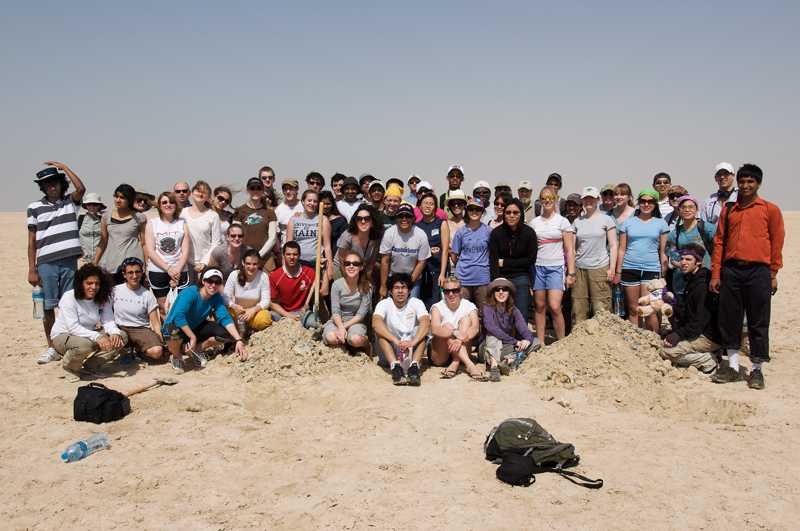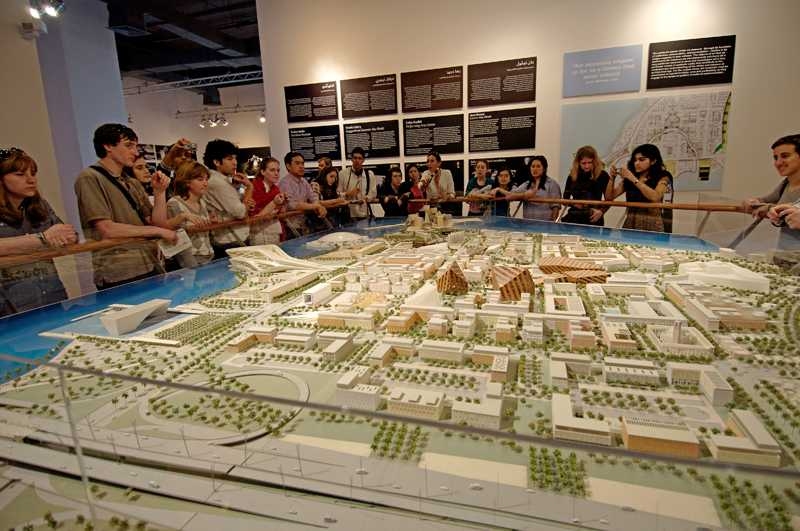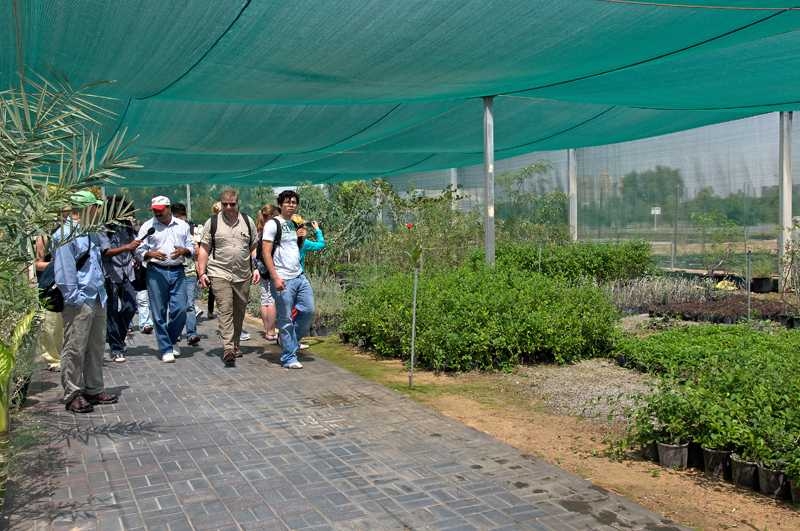A group of 58 MIT students, alumni and staff recently returned from a five-day trip to Abu Dhabi to study the practical application of technology for renewable energy solutions.
The trip was part of Terrascope, a yearlong program for first-year students that begins each fall with a mission to solve an “unsolvable” or very complex problem. The students spend the fall semester designing a viable solution and then travel during spring break to a location related to the complex problem where they experience the reality of the solutions they have proposed.
This year’s mission is the global problem of rising levels of carbon dioxide and other greenhouse gases. During the fall, the class explored ways to reduce global output, as well as methods for carbon capture and sequestration. They developed a plan for the coming decades and presented their solution on a web site.
In Abu Dhabi, the MIT group learned about Masdar City, a planned 50,000-person metropolis that will have no carbon footprint. The trip, which was supported by the Massiah Foundation, also included visits to various pilot sites currently testing carbon sequestration techniques.
Sam Bowring, Terrascope director and professor of earth, atmospheric, and planetary sciences, said the trip gave his students a chance to see firsthand “the challenges of working with multiple global partners to develop commercial-scale, sustainable energy solutions.”
The visit was hosted by faculty and students from the Masdar Institute of Science and Technology, the Middle East’s first graduate research institution dedicated to alternative energy, environmental technologies and sustainability. MIT’s Technology and Development Program is providing assistance and scholarly assessment in the development of the Institute.
Read more about the visit at the students’ blog.













